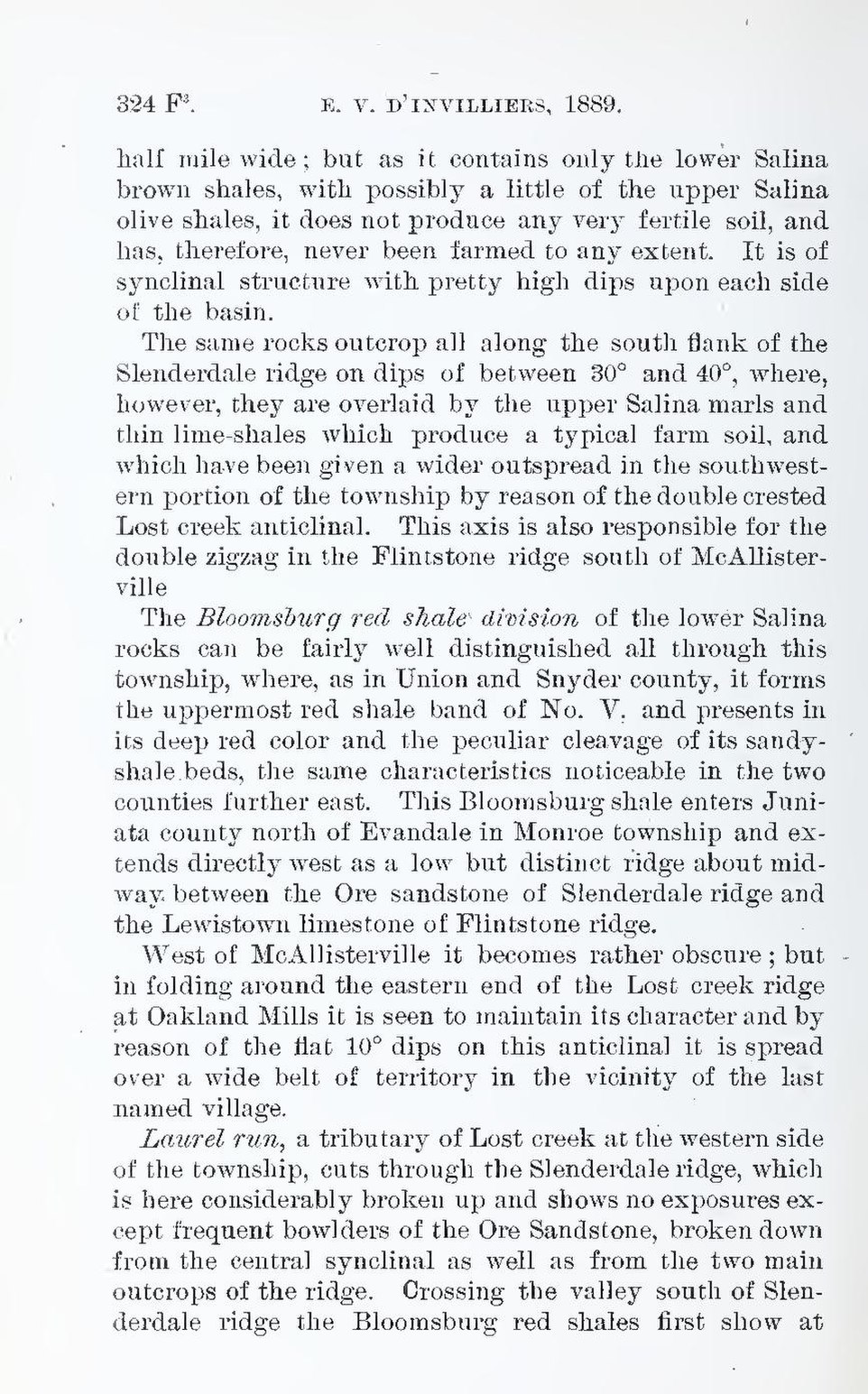half mile wide; but as it contains only the lower Salina brown shales, with possibly a little of the upper Salina olive shales, it does not produce any very fertile soil, and has, therefore, never been farmed to any extent. It is of synclinal structure with pretty high dips upon each side of the basin.
The same rocks outcrop all along the south flank of the Slenderdale ridge on dips of between 30° and 40°, where, however, they are overlaid by the upper Salina marls and thin lime-shales which produce a typical farm soil, and which have been given a wider outspread in the southwestern portion of the township by reason of the double crested Lost creek anticlinal. This axis is also responsible for the double zigzag in the Flintstone ridge south of McAllisterville.
The Bloomsburg red shale division of the lower Salina rocks can be fairly well distinguished all through this township, where, as in Union and Snyder county, it forms the uppermost red shale band of No. V. and presents in its deep red color and the peculiar cleavage of its sandy-shale beds, the same characteristics noticeable in the two counties further east. This Bloomsburg shale enters Juniata county north of Evandale in Monroe township and extends directly west as a low but distinct ridge about midway between the Ore sandstone of Slenderdale ridge and the Lewistown limestone of Flintstone ridge.
West of McAllisterville it becomes rather obscure; but in folding around the eastern end of the Lost creek ridge at Oakland Mills it is seen to maintain its character and by reason of the flat 10° dips on this anticlinal it is spread over a wide belt of territory in the vicinity of the last named village.
Laurel run, a tributary of Lost creek at the western side of the township, cuts through the Slenderdale ridge, which is here considerably broken up and shows no exposures except frequent bowlders of the Ore Sandstone, broken down from the central synclinal as well as from the two main outcrops of the ridge. Crossing the valley south of Slenderdale ridge the Bloomsburg red shales first show at
